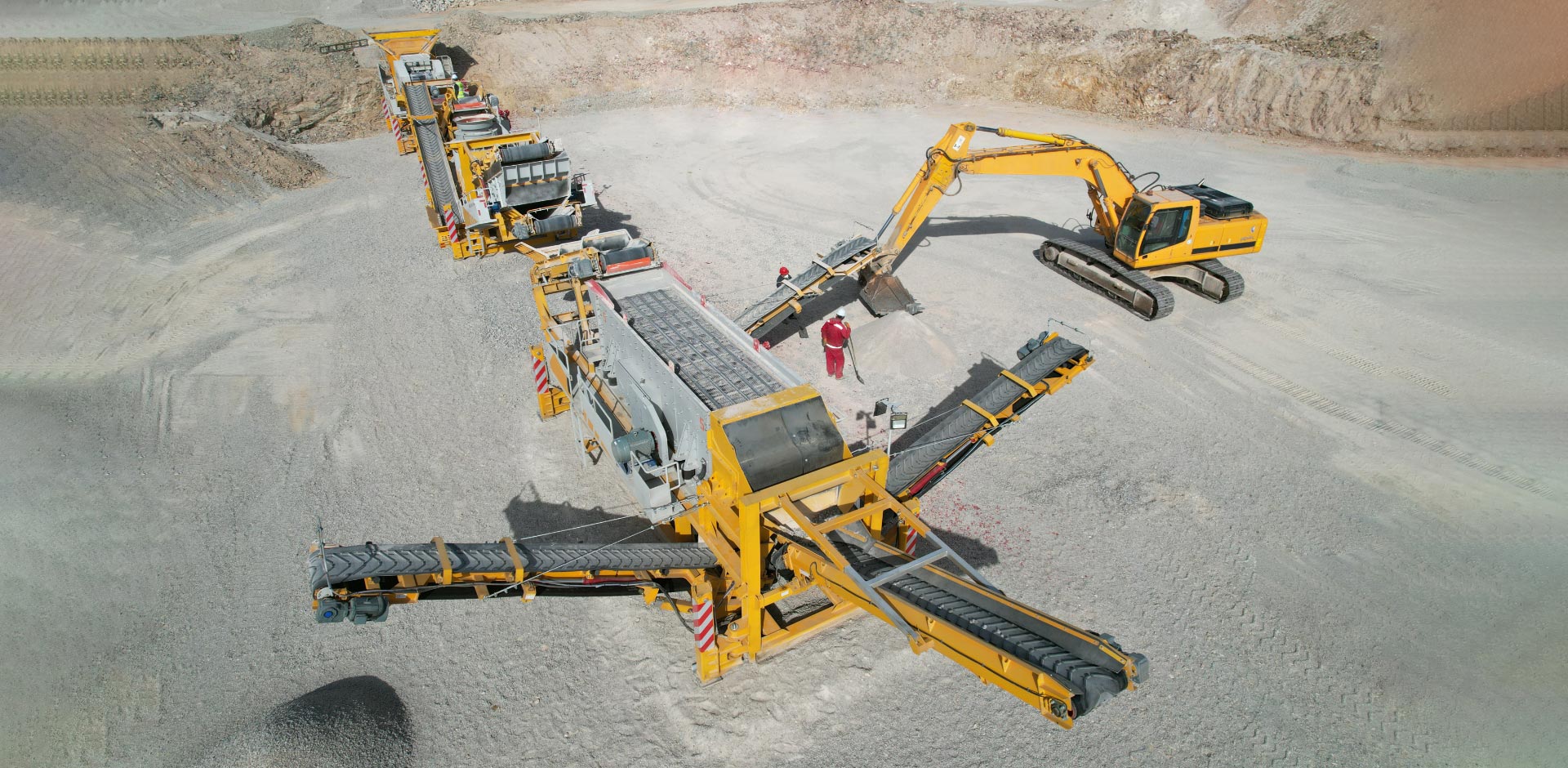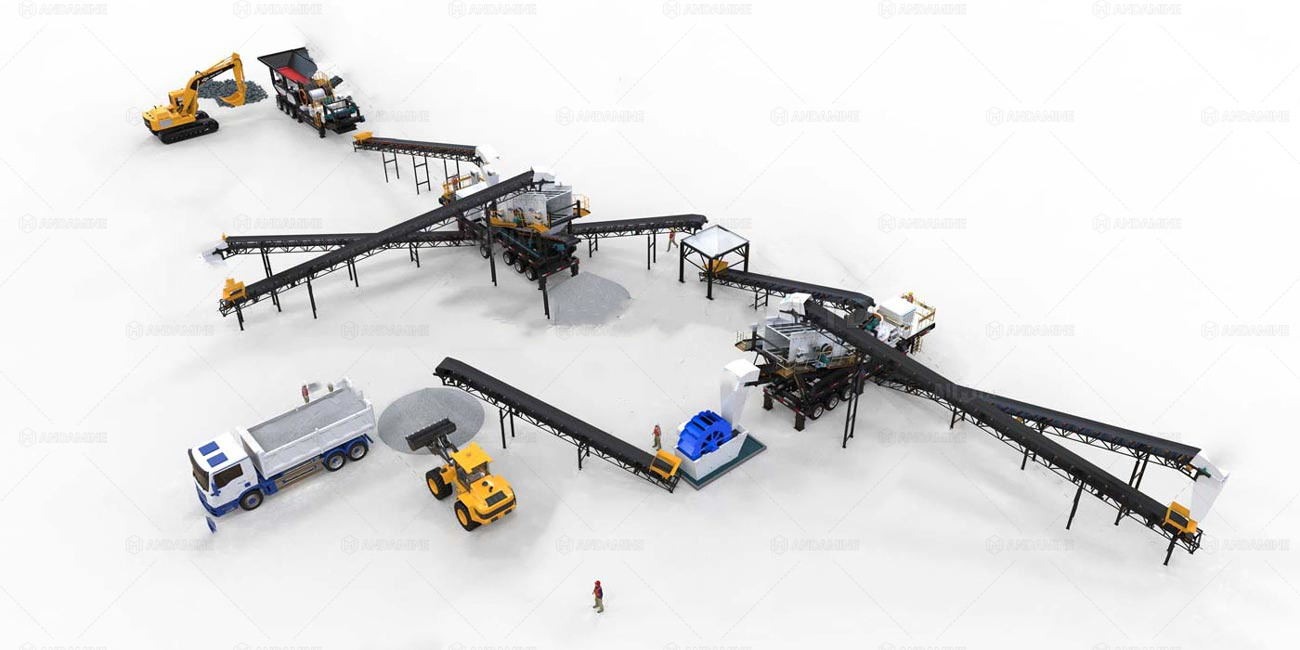The construction and aggregate production industries have increasingly relied on advanced crushing equipment to produce high-quality sand and aggregates. Among these machines, stone crusher sand making machine, mobile sand making machine, sand making crusher machine, and vsi sand making machine have become essential tools. Each type of equipment is designed with different technological principles, features, and applications, making it crucial for operators and investors to understand their differences to select the most suitable solution for their projects.
Overview of Stone Crusher Sand Making Machine
A stone crusher sand making machine is designed primarily for crushing hard stones and producing fine aggregates. It combines crushing and shaping functions, allowing operators to process raw stones into sand that meets construction standards. The key technology behind these machines lies in their crushing mechanism, often utilizing impact or rotor-driven systems to break rocks efficiently. Advanced models may include adjustable rotors and impact plates that allow for precise control over the particle size and shape of the finished sand.
The machine’s crushing chamber and rotor are engineered to handle high wear and tear, as natural stone can be abrasive and hard. In addition, vibration-damping systems and precision bearings are often incorporated to improve operational stability and extend equipment life. A stone crusher sand making machine is particularly suitable for fixed production lines where large volumes of high-quality sand are required.
Mobile Sand Making Machine Technology
The mobile sand making machine introduces the element of flexibility and mobility to aggregate production. Unlike stationary units, a mobile machine is mounted on a chassis with wheels or tracks, allowing it to move between construction sites or quarries. This mobility is made possible through compact yet robust design and integrated power systems that allow the machine to operate independently of fixed infrastructure.
From a technological perspective, mobile sand making machines incorporate modular components that can be quickly assembled and disassembled, as well as smart control systems for monitoring crushing efficiency and material flow. Hydraulic lifting and folding mechanisms enable rapid deployment, while automated feeder systems ensure consistent input, even on uneven ground. Additionally, mobile units often include onboard dust suppression and vibration reduction systems to comply with environmental regulations during operation.
The main advantage of a mobile sand making machine lies in its adaptability. Projects that involve short-term construction, remote locations, or varying aggregate needs benefit from the ability to relocate the crushing unit, which saves both transportation and operational costs.
Sand Making Crusher Machine Technology
A sand making crusher machine is a more general category of equipment designed to convert stones or rocks into fine sand. Its core technology revolves around the type of crushing method employed. For example, impact-based sand making crusher machines use high-speed rotors and impact plates to fracture stones, producing well-shaped sand with minimal fines. Meanwhile, compression-based sand making machines apply mechanical pressure through rollers or jaws, which is suitable for hard rocks but may require secondary crushing to achieve the desired sand quality.
One of the technological highlights of sand making crusher machines is the emphasis on particle shape and gradation. Modern machines incorporate adjustable impact angles, variable rotor speeds, and multi-stage screening systems. These features allow operators to fine-tune the product size and reduce the production of irregularly shaped particles, which improves the quality of concrete, asphalt, or plaster materials that use the sand.
In addition, energy efficiency and wear resistance are central technological considerations. High-quality sand making crusher machines employ high-strength steel components, optimized rotor designs, and low-friction bearings to minimize energy consumption while maintaining high throughput.

VSI Sand Making Machine Technology
The vsi sand making machine (Vertical Shaft Impact) represents one of the most advanced technologies in the field of sand production. Its key principle is using a high-speed rotor to accelerate stones and then collide them either with other stones or with a specially designed anvil, breaking them into fine, cubic-shaped particles. The VSI mechanism ensures that the output sand has excellent particle shape, low flakiness, and high uniformity, which are critical for high-quality construction aggregates.
Technologically, VSI sand making machines include wear-resistant materials for rotor tips and impact plates, sophisticated feed distribution systems, and precision control of rotor speed. These features allow the machine to handle abrasive rocks and maintain consistent production standards. Moreover, VSI machines often offer the ability to adjust rotor speed and feed configuration, allowing operators to customize the sand’s fineness and shape according to project specifications.
In addition, VSI machines are often combined with pre-screening and post-screening systems to improve efficiency and reduce recirculation of oversized materials. This integration of technology ensures high output with minimal operational interruptions.
Key Technological Differences
When comparing stone crusher sand making machine, mobile sand making machine, sand making crusher machine, and vsi sand making machine, several technological differences emerge:
1. Mobility: Mobile sand making machines are designed for on-site flexibility, whereas stone crushers and VSI machines are primarily stationary.
2. Crushing Mechanism: VSI sand making machines use high-speed impact to achieve superior particle shape, while stone crusher sand making machines may rely on rotor impact or compression methods.
3. Automation and Control: Modern mobile units and VSI machines often include smart control systems for monitoring throughput, rotor speed, and feed consistency, which may not be present in basic sand making crusher machines.
4. Wear Resistance: VSI and high-end stone crusher sand making machines employ advanced wear-resistant materials for high durability, essential for abrasive stones.
5. Output Quality: VSI machines excel in producing cubic-shaped, uniform sand, whereas traditional sand making crusher machines may require additional stages to achieve similar particle quality.
Conclusion
In conclusion, understanding the key technologies behind different types of sand making equipment is essential for choosing the right machine for specific aggregate production needs. Stone crusher sand making machine is suitable for fixed, high-volume production lines with hard stones. Mobile sand making machine offers flexibility for remote or multiple sites. Sand making crusher machine provides general-purpose sand production, emphasizing particle size and efficiency, while the VSI sand making machine excels in high-quality, uniform, and cubic-shaped sand production.
By carefully evaluating project requirements, site conditions, and desired output quality, operators can select the most appropriate machine, optimize productivity, and ensure cost-effective sand production for construction and infrastructure projects.

